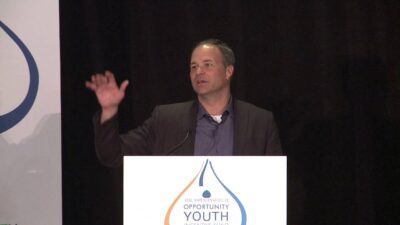
by Chekemma J. Fulmore-Townsend, President and CEO, Philadelphia Youth Network
During the OYIF 2016 April Convening, I had the chance to join the plenary discussion: ‘Responding to the Urgency of Now and Building the Momentum for Boys and Men of Color,’ and I was reminded of how important our work locally in Philadelphia has been and how imperative the work is ahead.
It is hard to believe that 10 years ago, Project U-Turn, Philadelphia’s campaign to address the local drop-out crisis, began an intentional local discussion about the disproportionate educational outcomes for boys of color. Unfulfilled Promises (2006) was one of the first research reports to explore the secondary credential attainment with a specific focus on race and gender. The study revealed that “40% of Latino males earned a high school diploma within six years; in comparison with 50% of African American males; and 65% of Asian males.” In reflection on the remarks made by former Secretary of Education Arne Duncan, I am reminded that the learnings from the seminal research still apply today. And, while much progress has been gained, there is still greater progress to achieve. A Promise Worth Keeping (2015) affirmed that the graduation rates for males and youth of color improved; however, they still lagged behind their peers in graduation and post-secondary access and retention. This phenomenon of disproportionate access to opportunity and disproportionate outcomes is far too prevalent for boys and men of color. We can no longer afford to delay our actions or to operate without a focus on intention. The plenary discussion reminded me of some concrete lessons that have sustained Philadelphia’s local efforts.
Lesson 1: Alignment is a tactical approach to maximize resources.
Philadelphia was the first city to respond to the My Brother’s Keeper Community Challenge, building on local partnerships to ensure all six milestones were well aligned with existing efforts. Without additional resources, it can be challenging to accelerate progress. The national focus My Brother’s Keeper brings to the needs of boys and men of color is long overdue, but without strong partnerships, clear indicators of collaboration and resources to support coordination amongst partners, sustainable progress is threatened.
Lesson 2: Let the data lead, not impede.
Long before President Obama introduced My Brother’s Keeper, many communities had anchor organizations that were and still are committed to gender-responsive services for boys and men of color. With limited resources, it is important to identify what works for whom, and to invest in programs with strong and long-lasting results. Data can be a great guide when used to target action and validate what works, but we need diversity in analyzing data, differentiating strategies and multiple forms of “evidence.” An inclusive and equitable approach to evaluation leads to a knowledge base that is developed with a full range of organizations with experience and expertise.
Lesson 3: Nothing about us, without us.
Honoring the innate abilities and real experiences of young men of color is critical to unlocking innovative strategies and interrupting systemic barriers. Boys and men of color must be given more than a seat at the table. They must be given voice and vote in policy and practice decisions that impact them the most.
This plenary session reminded me that there is so much to do nationally and locally, and there is no better time to do it than NOW.
Check out the video of the plenary session, “Responding to the Urgency of Now and Building the Momentum for Boys and Men of Color” at the OYIF April 2016 Convening.